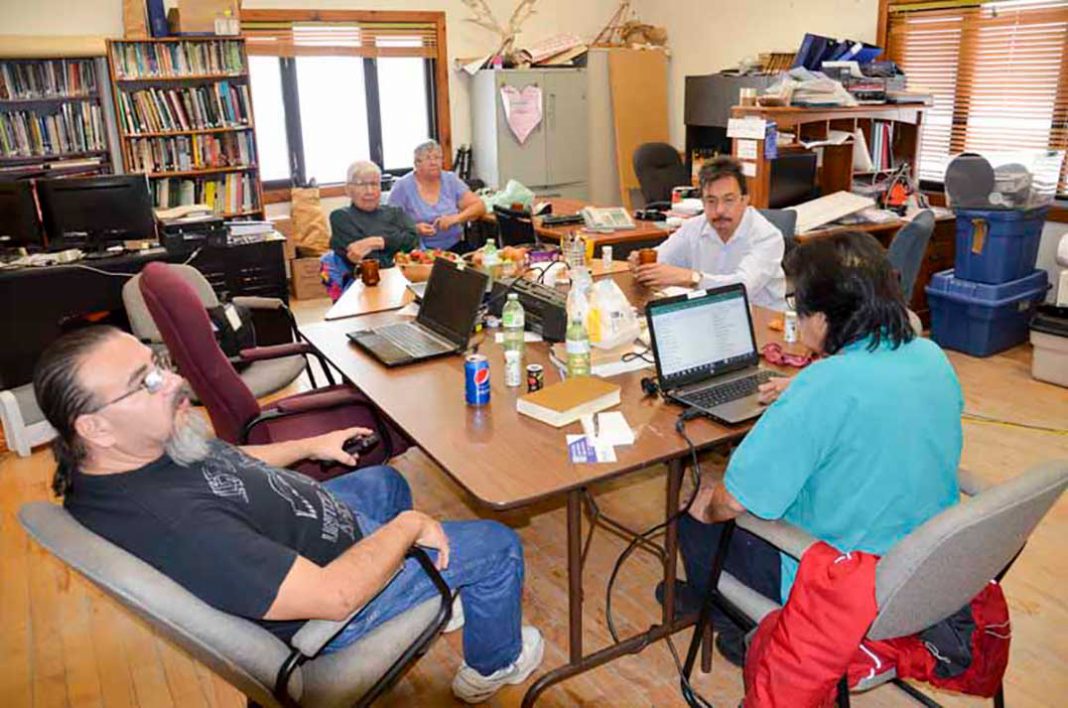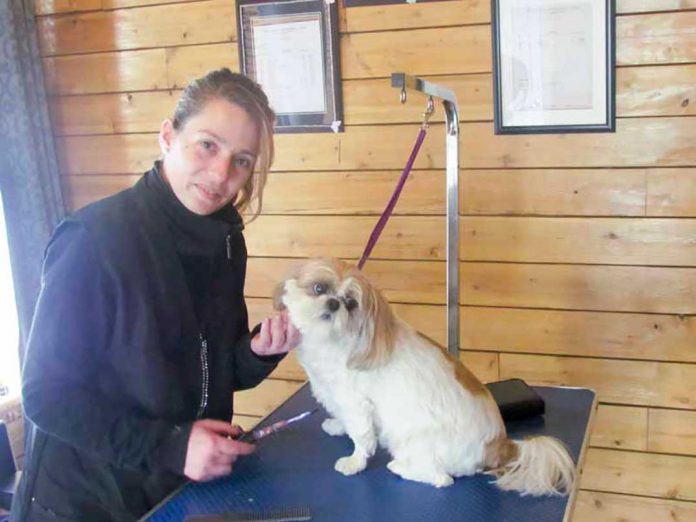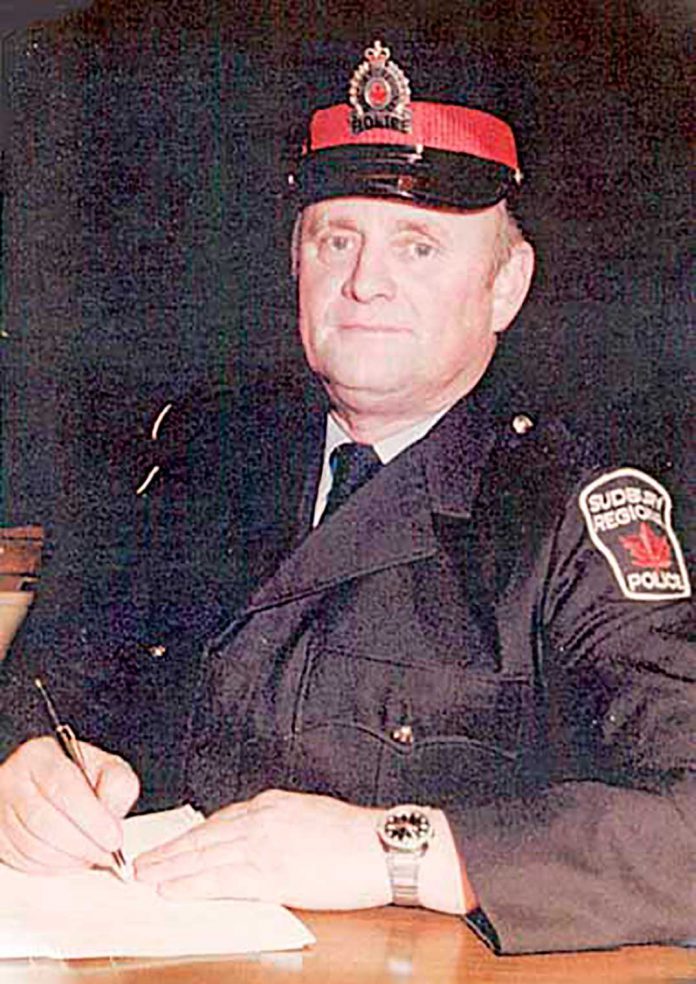A labour of love by one generation for the benefit of the next
WIKWEMIKONG—A dedicated group of language speakers come together each Thursday to talk Anishinabemowin, not just any dialect of Odawa, Ojibwe or Potawatamie (the three Anishinabe subgroups that make up the Wikwemikong population), but the living language of the people of the Wikwemikong Unceded Territories. But it isn’t all just talk, this is a working group with a focus on and the goal of creating a comprehensive dictionary.
“This has been a very exciting project,” said Wikwemikong Heritage Organization Cultural Programmer Brian Peltier, who noted that although the grassroots group has not been working on the project for all that long, really getting underway since early last summer, they are already up to 10,000 individual words. “When complete, it should be more than 20,000 words, each with 10 to 20 phrases. We have been going at it pretty much non-stop.”
As Mr. Peltier delves into the process it is easy to become lost in the specialized terminology associated with formal dictionary listings. “I learned a lot about this myself,” he laughs.
Anishinabemowin, as it is spoken in Wikwemikong, is really an amalgam of the three base languages (the aforementioned Odawa, Ojibwe and Potawatomie), he explains. Through close association over the past two centuries, the language spoken in Wikwemikong has adopted different nuances that are specific to the communities in the Unceded Territories.
“When I speak to people down in Minnesota, they will often ask me ‘what is that you just said?’,” noted Mr. Peltier.
Like any living language, there have also been new words created as time has gone by.
Creating a dictionary that bridges the divide between Anishinabemowin and English has a number of challenges that are less likely to arise between English and the European languages from which it is derived.
“Our language is divided between animate and inanimate,” notes Mr. Peltier. But it is far more complex than that. “A car, for example, because it moves, it is animate.”
There are also many sounds that exist in Anishinabemowin that are not prevalent in English or other European languages. “There are nasal sounds, guttural sounds, sounds that you just don’t find in the English language,” he explained.
As Mr. Peltier explains the group’s workings, the elders in the room focus back on the task at hand and begin to discuss the nuances of the word that is currently being worked on, displayed on a whiteboard at one end of the room. It is a big job and they are determined to get it done.
That having been noted, Mr. Peltier said that he does not anticipate the work actually ever being fully completed. As a dynamic and living language, the Anishinabemowin of Wikwemikong is itself constantly evolving and developing. “How many editions of the Oxford Dictionary have there been so far?” he laughs.
Another complicating factor is that each word can change its meaning slightly (or dramatically) depending on context and exposition. While a phrase may mean “are you cooking” in one expression or tone, it could change to an expression of incredulity with another. “Speak softer” when said in one manner could be expressed as “shut up” when barked at the target of the phrase.
Even more important than the aspects of expression and tone in translating the Anishinabemowin is the underlying spirituality of the language, a nuance easily missed by those unaware of its import.
“Our language is very spiritual and linked to our culture,” explained Mr. Peltier. “They are deeply linked. It is a different way of thinking.”
This interconnection between language, spirituality and culture is something that is poorly understood in mainstream culture—often leading to confusion as to the deep concern that Native communities express when it comes to the continuing erosion and loss of their languages. That connection between language, spirituality and culture is also inextricably linked to the land and goes a long way to explaining the attachment many reserves have to their territories. It is those interconnections and linkages that motivate the urgency and determination of the grassroots working group and brings them out in force to the weekly work sessions.
In addition to the weekly Thursday gatherings, there is also a monthly meeting held at Amikook Seniors’ Centre, noted Mr. Peltier. “That is where our stories are told,” he said. So much of the history and knowledge of the community are contained within those old stories and words are the threads that help to weave Wikwemikong’s version of their Bayeux tapestry. Theirs is an oral tradition and by being an orally-based history, it protected the past from the ravages of the residential school system—except in the damage that was done to the language through that system, a damage that is still reverberating through First Nation communities.
With the technical support of Nathan Bryant, committee members Jacob Wemigwans, Stephen George, Rita Corbiere, Peter Mishibinijima, Phyllis Williams and Rosinda Peltier delve into the nuances of the words that define the world of their ancestors and the future of their descendants—because for each of them, it is a labour of love.





